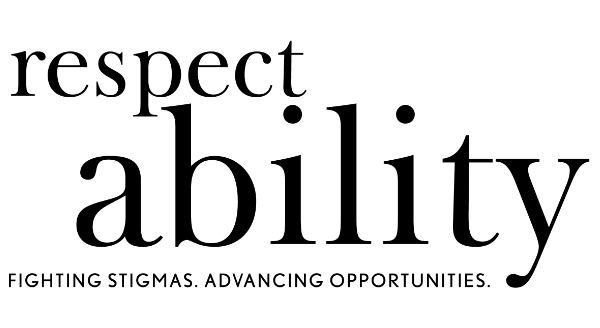- Floridians with disabilities experience the biggest jobs gains of any state, with more than 35,000 people with disabilities entering the workforce.
- Employers hire more people with disabilities as they find that recruiting, hiring and retaining employees with disabilities benefits their bottom line.
Washington, D.C., Feb. 22 – As America’s governors gather in Washington for the National Governors Association meeting, new statistics show that Americans with disabilities are entering the workforce in unprecedented numbers for the first time. New data from the Institute on Disability at the University of New Hampshire reveals that 343,483 more people with disabilities joined the American workforce in 2016. This compares to only 87,201 in the previous year. Even while Americans with disabilities are entering the workforce in greater numbers, serious gaps in employment exist between different states. For example, 54 percent of working-age people with disabilities in North Dakota have jobs, while only 27.4 percent of people with disabilities in West Virginia are employed.
NEW DATA
According to the 2017 Annual Disability Statistics Compendium, only 35.9 percent of U.S. civilians with disabilities ages 18-64 living in the community had a job, compared to 76.9 percent for people without disabilities. However, this is an increase from the previous year, which was 34.9 percent. Out of almost 20 million working-age people with disabilities, only 7.4 million people with disabilities have a job in 2016. A new poll released by RespectAbility shows that millions of people with disabilities are striving to work and that they want to work.
Driving success and inclusion are companies including JP Morgan Chase, Pepsi, UPS, SAP, EY, IBM, Starbucksand Walgreens. These companies have seen that people with disabilities are successful employees who improve businesses’ bottom lines.
However, looking at topline national statistics only tells part of the story. State-specific data compiled by the Rehabilitation Research and Training Center on Disability Statistics and Demographics (StatsRRTC) shows massive differences among states. In fact, there are some states where people with disabilities are twice as likely to be employed as in other states.
BEST STATES FOR PEOPLE WITH DISABILITIES
North Dakota leads the nation with 54 percent of its citizens with disabilities employed. It is closely followed by South Dakota, where 51.6 percent of people with disabilities have a job. Fully 48 percent of Minnesotans with disabilities are employed. Other top 10 states include Alaska with a 47.9-percent employment rate for people with disabilities, Nebraska with a 47.4-percent disability employment rate, Wyoming with 47.2 percent, Utah with 47 percent, Iowa with 45.9 percent, and Kansas with 44.7 percent. Montana, under Governor Steve Bullock has, for the first time, joined the top 10 states with the best disability employment rates.
| Table 1 – Top 10 States for Workers with Disabilities | |||||
| State Ranking | State | Total # of PwDs (Aged 18-64) | # of
PwDs Employed |
Total # Jobs Gained + or Lost – | Percentage of PwDs Employed |
| 1 | ND | 43,089 | 23,286 | +4,704 | 54% |
| 2 | SD | 51,003 | 26,323 | – 96 | 51.5% |
| 3 | MN | 302,274 | 145,080 | +3,823 | 48% |
| 4 | AK | 50,330 | 24,090 | +4,139 | 47.9% |
| 5 | NE | 112,418 | 53,323 | +3,838 | 47.4% |
| 6 | WY | 39,161 | 18,485 | – 3,023 | 47.2% |
| 7 | UT | 159,024 | 74,767 | +3,582 | 47% |
| 8 | IA | 175,367 | 80,416 | – 2,975 | 45.9% |
| 9 | KS | 188,671 | 84,262 | +5,130 | 44.7% |
| 10 | MT | 76,169 | 33,419 | +4,459 | 43.9% |
Comparing the number of working-age people with disabilities employed in 2016 to the 2015 numbers reveals that Floridians with disabilities experienced the biggest jobs gains of any state in the nation, with 35,480 entering the workforce. The second largest growth was in the state of Georgia, where 28,000 working-age people with disabilities got jobs. In terms of the largest states in the nation, California added 19,398 working-age people with disabilities to the workforce, while Texas added 17,736 Texans with disabilities to their state workforce last year.
Alaska had the biggest percentage point gain in disability employment rates, going up 5.5 percentage points, followed by North Dakota’s 5.2 percentage point gain in jobs. Idahoans with disabilities have also seen a big increase with their employment rate rising from 38.3 percent in 2015 to 43.3 percent in 2016. South Carolina has also seen an increase in the number of people with disabilities working, with more than 23,000 getting jobs. Just as looking at the employment rates is a key part of the story of workers with disabilities, so too is the employment gap between people with and without disabilities.
GAPS IN EMPLOYMENT
Looking at the employment gap, which is the difference in employment rates between people with and without disabilities, reveals how far behind people with disabilities are falling in a state’s economy. The smaller the gap, the more inclusive a given state’s economy is, which translates into more opportunities for people to earn an income and become independent. The bigger the gap means fewer jobs for people with disabilities compared to their non-disabled peers.
Alaska shows great success with only a 28.2 percentage point gap, the smallest gap of any state. According to the new data, Rhode Island had a 48.6 percentage point gap in employment.
WHAT WORKS?
Looking beyond the data, two questions emerge – What works to expand employment opportunities for people with disabilities, and what can state leaders do to improve outcomes?
“States including Wisconsin, South Carolina, and Alaska show how a commitment to school-to-work transitions can create brighter futures for young people with disabilities,” says Jennifer Laszlo Mizrahi, President of RespectAbility. “Pennsylvania and Minnesota have brought Employment First policies and a collaborative approach around transitions which has resulted in thousands of new jobs for their constituents with disabilities.”
Nationally, there already are two models that are achieving extraordinary success with work-based learning opportunities: Project SEARCH and Bridges from School to Work. SEARCH is a unique, employer-driven transition program that prepares students with disabilities for employment success. Likewise, Bridges offers assessments, workshops and job matching. SEARCH has grown to more than 300 programs in 46 states and served nearly 3,000 youth in 2015. Among those young people, more than 78 percent found jobs. These are transformative results for people with disabilities.
LINKING EXPECTATIONS, EDUCATION AND EMPLOYMENT
“Employment rates only tell part of the story,” said Philip Kahn-Pauli, Policy and Practices Director at RespectAbility. “Educational attainment is critical to the success of youth with disabilities because the jobs of the future require technical education and skill training.”
Despite progress made in recent years, students with disabilities are lagging significantly behind their nondisabled peers in educational attainment. Nationally, only 65 percent of students with disabilities complete high school, and less than seven percent of people with disabilities complete college. For youth of color with disabilities and English Language Learners with disabilities, their outcomes are even worse. Key barriers include low expectations and the fact that many school systems either fail to diagnose our kids early enough or address their issues at all. This often pushes children with disabilities into the school-to-prison pipeline. Appropriate early intervention, positive supports, and basic training for educators, parents, and guardians are vital.
SPECIAL NOTE – INTERSECTIONS WITH RACE, DISABILITY AND EMPLOYMENT
Even as companies are driving inclusion and states are finding success, there are still people left behind.
“Just as looking at the state-level employment rates tells a more complex story, so too when you look at the employment rates among people with disabilities across racial lines, you find serious gaps in outcomes,” Kahn-Pauli said.
Only 28.4 percent of African-Americans, 37.4 percent of Hispanics, and 40 percent of Asian Americans with disabilities have jobs. Indeed, out of at least 3,311,789 working-age African-Americans with disabilities, only 942,159 have jobs. Among the 2,924,914 working-age Hispanics with disabilities,only 1,093,063 have jobs. Out of the 516,555 working-age Asian Americans with disabilities, only 209,698 have jobs in the community.
WHAT’S NEXT? BUILDING ON THE SUCCESS OF PEOPLE WITH DISABILITIES
“The Workforce Innovation and Opportunity Act, strong actions by many governors, and more positive portrayals of people with disabilities on TV are starting to have a positive impact. It is fantastic to see the four-fold improvement in one year,” said Mizrahi. The annual Disability Statistics Compendium and the monthly Trends in Disability Employment report show signs for continuing hope as the more people with disabilities enter the labor market.
“At the end of the day, our nation was founded on the principle that anyone who works hard should be able to get ahead in life,” Mizrahi said. “People with disabilities deserve the opportunity to earn an income and achieve independence, just like anyone else.”
| Table 2 – Compiled Table | |||||
| State | Total # of Working-Age PWDs | ||||
| Total # of PWDs with Jobs | PWD Employment Rate | Employment Gap in % Pts. | # of Job Gains/Losses Among PWDs 2015-2016 | ||
| AL | 421,135 | 115,799 | 27.5 | 45.5 | -5,531 |
| AK | 50,330 | 24,090 | 47.9 | 28.2 | 4,139 |
| AZ | 432,087 | 150,434 | 34.8 | 39.7 | 7,266 |
| AR | 269,725 | 85,447 | 31.7 | 43 | 4,071 |
| CA | 2,023,714 | 701,791 | 34.7 | 39.5 | 19,398 |
| CO | 308,342 | 131,658 | 42.7 | 37 | 14,846 |
| CT | 191,687 | 74,715 | 39 | 39.8 | 7,198 |
| DE | 56,546 | 20,284 | 35.9 | 39.9 | 1,691 |
| FL | 1,255,268 | 404,685 | 32.2 | 42.9 | 35,480 |
| GA | 698,283 | 236,577 | 33.9 | 41.8 | 28,642 |
| HI | 66,031 | 26,356 | 39.9 | 38.7 | 715 |
| ID | 115,652 | 50,090 | 43.3 | 33.8 | 4,966 |
| IL | 679,862 | 242,783 | 35.7 | 42 | 9,550 |
| IN | 485,824 | 175,379 | 36.1 | 43 | 5,329 |
| IA | 175,367 | 80,416 | 45.9 | 36.6 | -2,975 |
| KS | 188,671 | 84,262 | 44.7 | 35.5 | 5,130 |
| KY | 439,748 | 133,926 | 30.5 | 44.9 | 18,349 |
| LA | 384,377 | 120,443 | 31.3 | 41.6 | -2,389 |
| ME | 109,376 | 36,357 | 33.2 | 47.3 | 2,305 |
| MD | 334,505 | 137,517 | 41.1 | 39.1 | 5,944 |
| MA | 390,729 | 150,647 | 38.6 | 41.4 | 12,662 |
| MI | 764,335 | 254,334 | 33.3 | 43 | 19,978 |
| MN | 302,274 | 145,080 | 48 | 35.8 | 3,823 |
| MS | 258,824 | 76,078 | 29.4 | 41.9 | 4,739 |
| MO | 468,140 | 164,243 | 35.1 | 44.1 | 669 |
| MT | 76,169 | 33,419 | 43.9 | 35.3 | 4,459 |
| NE | 112,418 | 53,323 | 47.4 | 36.5 | 3,838 |
| NV | 198,826 | 83,453 | 42 | 34.1 | -106 |
| NH | 88,094 | 36,745 | 41.7 | 41.1 | 1,355 |
| NJ | 435,265 | 159,575 | 36.7 | 40.6 | -3,153 |
| NM | 153,667 | 49,084 | 31.9 | 40 | 945 |
| NY | 1,109,370 | 367,478 | 33.1 | 42.4 | 5,081 |
| NC | 722,636 | 249,230 | 34.5 | 41.2 | 14,556 |
| ND | 43,089 | 23,286 | 54 | 30.2 | 4,704 |
| OH | 851,743 | 304,940 | 35.8 | 42.7 | 6,707 |
| OK | 334,056 | 123,568 | 37 | 38.4 | 11,896 |
| OR | 303,115 | 118,914 | 39.2 | 37.7 | -2,241 |
| PA | 909,897 | 323,354 | 35.5 | 42.2 | 6,993 |
| RI | 76,763 | 23,029 | 30 | 48.6 | -3,477 |
| SC | 388,251 | 129,766 | 33.4 | 42.1 | 23,416 |
| SD | 51,003 | 26,323 | 51.6 | 30.7 | -96 |
| TN | 558,852 | 174,370 | 31.2 | 44.9 | 7,191 |
| TX | 1,653,862 | 644,181 | 39 | 36.9 | 17,736 |
| UT | 159,024 | 74,767 | 47 | 31.9 | 3,582 |
| VT | 49,458 | 20,506 | 41.5 | 39.6 | 931 |
| VA | 496,928 | 193,632 | 39 | 39.7 | 14,479 |
| WA | 494,903 | 193,792 | 39.2 | 38.1 | 15,871 |
| WV | 194,669 | 53,372 | 27.4 | 43.4 | 5,855 |
| WI | 344,120 | 143,726 | 41.8 | 40.4 | -1,089 |
| WY | 39,161 | 18,485 | 47.2 | 32.3 | -3,023 |
| Table 3 – Ranking of States Best to Worst Employment for People with Disabilities | |
| State | Percentage |
| ND | 54 |
| SD | 51.6 |
| MN | 48 |
| AK | 47.9 |
| NE | 47.4 |
| WY | 47.2 |
| UT | 47 |
| IA | 45.9 |
| KS | 44.7 |
| MT | 43.9 |
| ID | 43.3 |
| CO | 42.7 |
| NV | 42 |
| WI | 41.8 |
| NH | 41.7 |
| VT | 41.5 |
| MD | 41.1 |
| HI | 39.9 |
| OR | 39.2 |
| WA | 39.2 |
| CT | 39 |
| TX | 39 |
| VA | 39 |
| MA | 38.6 |
| OK | 37 |
| NJ | 36.7 |
| IN | 36.1 |
| DE | 35.9 |
| OH | 35.8 |
| IL | 35.7 |
| PA | 35.5 |
| MO | 35.1 |
| AZ | 34.8 |
| CA | 34.7 |
| NC | 34.5 |
| GA | 33.9 |
| SC | 33.4 |
| MI | 33.3 |
| ME | 33.2 |
| NY | 33.1 |
| FL | 32.2 |
| NM | 31.9 |
| AR | 31.7 |
| LA | 31.3 |
| TN | 31.2 |
| KY | 30.5 |
| RI | 30 |
| MS | 29.4 |
| AL | 27.5 |
| WV | 27.4 |
| Table 4 – Employment Among People with Disabilities, living in the community, by state – 2017 | |||
| State | Total | Employed | |
| Count | % | ||
| U.S. | 20,761,092 | 7,461,001 | 35.9 |
| AL | 421,135 | 115,799 | 27.5 |
| AK | 50,330 | 24,090 | 47.9 |
| AZ | 432,087 | 150,434 | 34.8 |
| AR | 269,725 | 85,447 | 31.7 |
| CA | 2,023,714 | 701,791 | 34.7 |
| CO | 308,342 | 131,658 | 42.7 |
| CT | 191,687 | 74,715 | 39 |
| DE | 56,546 | 20,284 | 35.9 |
| FL | 1,255,268 | 404,685 | 32.2 |
| GA | 698,283 | 236,577 | 33.9 |
| HI | 66,031 | 26,356 | 39.9 |
| ID | 115,652 | 50,090 | 43.3 |
| IL | 679,862 | 242,783 | 35.7 |
| IN | 485,824 | 175,379 | 36.1 |
| IA | 175,367 | 80,416 | 45.9 |
| KS | 188,671 | 84,262 | 44.7 |
| KY | 439,748 | 133,926 | 30.5 |
| LA | 384,377 | 120,443 | 31.3 |
| ME | 109,376 | 36,357 | 33.2 |
| MD | 334,505 | 137,517 | 41.1 |
| MA | 390,729 | 150,647 | 38.6 |
| MI | 764,335 | 254,334 | 33.3 |
| MN | 302,274 | 145,080 | 48 |
| MS | 258,824 | 76,078 | 29.4 |
| MO | 468,140 | 164,243 | 35.1 |
| MT | 76,169 | 33,419 | 43.9 |
| NE | 112,418 | 53,323 | 47.4 |
| NV | 198,826 | 83,453 | 42 |
| NH | 88,094 | 36,745 | 41.7 |
| NJ | 435,265 | 159,575 | 36.7 |
| NM | 153,667 | 49,084 | 31.9 |
| NY | 1,109,370 | 367,478 | 33.1 |
| NC | 722,636 | 249,230 | 34.5 |
| ND | 43,089 | 23,286 | 54 |
| OH | 851,743 | 304,940 | 35.8 |
| OK | 334,056 | 123,568 | 37 |
| OR | 303,115 | 118,914 | 39.2 |
| PA | 909,897 | 323,354 | 35.5 |
| RI | 76,763 | 23,029 | 30 |
| SC | 388,251 | 129,766 | 33.4 |
| SD | 51,003 | 26,323 | 51.6 |
| TN | 558,852 | 174,370 | 31.2 |
| TX | 1,653,862 | 644,181 | 39 |
| UT | 159,024 | 74,767 | 47 |
| VT | 49,458 | 20,506 | 41.5 |
| VA | 496,928 | 193,632 | 39 |
| WA | 494,903 | 193,792 | 39.2 |
| WV | 194,669 | 53,372 | 27.4 |
| WI | 344,120 | 143,726 | 41.8 |
| WY | 39,161 | 18,485 | 47.2 |
| Table 5 – Total Job Gains and Losses among People with Disabilities in the States – 2015 to 2016 | ||||
| State | 2016 PWDs Employed | State | 2015 Employed | Job Gaines or Losses |
| Count | Count | |||
| U.S. | 7,461,001 | U.S. | 7,117,518 | 343,483 |
| AL | 115,799 | AL | 121,330 | -5,531 |
| AK | 24,090 | AK | 19,951 | 4,139 |
| AZ | 150,434 | AZ | 143,168 | 7,266 |
| AR | 85,447 | AR | 81,376 | 4,071 |
| CA | 701,791 | CA | 682,393 | 19,398 |
| CO | 131,658 | CO | 116,812 | 14,846 |
| CT | 74,715 | CT | 67,517 | 7,198 |
| DE | 20,284 | DE | 18,593 | 1,691 |
| FL | 404,685 | FL | 369,205 | 35,480 |
| GA | 236,577 | GA | 207,935 | 28,642 |
| HI | 26,356 | HI | 25,641 | 715 |
| ID | 50,090 | ID | 45,124 | 4,966 |
| IL | 242,783 | IL | 233,233 | 9,550 |
| IN | 175,379 | IN | 170,050 | 5,329 |
| IA | 80,416 | IA | 83,391 | -2,975 |
| KS | 84,262 | KS | 79,132 | 5,130 |
| KY | 133,926 | KY | 115,577 | 18,349 |
| LA | 120,443 | LA | 122,832 | -2,389 |
| ME | 36,357 | ME | 34,052 | 2,305 |
| MD | 137,517 | MD | 131,573 | 5,944 |
| MA | 150,647 | MA | 137,985 | 12,662 |
| MI | 254,334 | MI | 234,356 | 19,978 |
| MN | 145,080 | MN | 141,257 | 3,823 |
| MS | 76,078 | MS | 71,339 | 4,739 |
| MO | 164,243 | MO | 163,574 | 669 |
| MT | 33,419 | MT | 28,960 | 4,459 |
| NE | 53,323 | NE | 49,485 | 3,838 |
| NV | 83,453 | NV | 83,559 | -106 |
| NH | 36,745 | NH | 35,390 | 1,355 |
| NJ | 159,575 | NJ | 162,728 | -3,153 |
| NM | 49,084 | NM | 48,139 | 945 |
| NY | 367,478 | NY | 362,397 | 5,081 |
| NC | 249,230 | NC | 234,674 | 14,556 |
| ND | 23,286 | ND | 18,582 | 4,704 |
| OH | 304,940 | OH | 298,233 | 6,707 |
| OK | 123,568 | OK | 111,672 | 11,896 |
| OR | 118,914 | OR | 121,155 | -2,241 |
| PA | 323,354 | PA | 316,361 | 6,993 |
| RI | 23,029 | RI | 26,506 | -3,477 |
| SC | 129,766 | SC | 106,350 | 23,416 |
| SD | 26,323 | SD | 26,419 | -96 |
| TN | 174,370 | TN | 167,179 | 7,191 |
| TX | 644,181 | TX | 626,445 | 17,736 |
| UT | 74,767 | UT | 71,185 | 3,582 |
| VT | 20,506 | VT | 19,575 | 931 |
| VA | 193,632 | VA | 179,153 | 14,479 |
| WA | 193,792 | WA | 177,921 | 15,871 |
| WV | 53,372 | WV | 47,517 | 5,855 |
| WI | 143,726 | WI | 144,815 | -1,089 |
| WY | 18,485 | WY | 21,508 | -3,023 |
| Table 6 – States Ranked by Employment Gap | |||
| State | Employment Rate for PWDs | Employment rate for Non-PWDs | Employment Gap in % Pts. |
| AK | 47.9 | 76.1 | 28.2 |
| ND | 54 | 84.2 | 30.2 |
| SD | 51.6 | 82.3 | 30.7 |
| UT | 47 | 78.9 | 31.9 |
| WY | 47.2 | 79.5 | 32.3 |
| ID | 43.3 | 77.1 | 33.8 |
| NV | 42 | 76.1 | 34.1 |
| MT | 43.9 | 79.2 | 35.3 |
| KS | 44.7 | 80.2 | 35.5 |
| MN | 48 | 83.8 | 35.8 |
| NE | 47.4 | 83.9 | 36.5 |
| IA | 45.9 | 82.5 | 36.6 |
| TX | 39 | 75.9 | 36.9 |
| CO | 42.7 | 79.7 | 37 |
| OR | 39.2 | 76.9 | 37.7 |
| WA | 39.2 | 77.3 | 38.1 |
| OK | 37 | 75.4 | 38.4 |
| HI | 39.9 | 78.6 | 38.7 |
| MD | 41.1 | 80.2 | 39.1 |
| CA | 34.7 | 74.2 | 39.5 |
| VT | 41.5 | 81.1 | 39.6 |
| AZ | 34.8 | 74.5 | 39.7 |
| VA | 39 | 78.7 | 39.7 |
| CT | 39 | 78.8 | 39.8 |
| DE | 35.9 | 75.8 | 39.9 |
| NM | 31.9 | 71.9 | 40 |
| WI | 41.8 | 82.2 | 40.4 |
| NJ | 36.7 | 77.3 | 40.6 |
| NH | 41.7 | 82.8 | 41.1 |
| NC | 34.5 | 75.7 | 41.2 |
| MA | 38.6 | 80 | 41.4 |
| LA | 31.3 | 72.9 | 41.6 |
| GA | 33.9 | 75.7 | 41.8 |
| MS | 29.4 | 71.3 | 41.9 |
| IL | 35.7 | 77.7 | 42 |
| SC | 33.4 | 75.5 | 42.1 |
| PA | 35.5 | 77.7 | 42.2 |
| NY | 33.1 | 75.5 | 42.4 |
| OH | 35.8 | 78.5 | 42.7 |
| FL | 32.2 | 75.1 | 42.9 |
| AR | 31.7 | 74.7 | 43 |
| IN | 36.1 | 79.1 | 43 |
| MI | 33.3 | 76.3 | 43 |
| WV | 27.4 | 70.8 | 43.4 |
| MO | 35.1 | 79.2 | 44.1 |
| KY | 30.5 | 75.4 | 44.9 |
| TN | 31.2 | 76.1 | 44.9 |
| AL | 27.5 | 73 | 45.5 |
| ME | 33.2 | 80.5 | 47.3 |
| RI | 30 | 78.6 | 48.6 |
| Table 7 – Percentage Change in Employment Rate by State | |||
| State | |||
| 2016% | 2015% | % Change | |
| AL | 27.5 | 27.9 | -0.4 |
| AK | 47.9 | 42.4 | 5.5 |
| AZ | 34.8 | 34.2 | 0.6 |
| AR | 31.7 | 30.7 | 1 |
| CA | 34.7 | 33.8 | 0.9 |
| CO | 42.7 | 40.8 | 1.9 |
| CT | 39 | 35.4 | 3.6 |
| DE | 35.9 | 33.9 | 2 |
| DC | 34 | 31.4 | 2.6 |
| FL | 32.2 | 31.1 | 1.1 |
| GA | 33.9 | 31.6 | 2.3 |
| HI | 39.9 | 40.2 | -0.3 |
| ID | 43.3 | 38.3 | 5 |
| IL | 35.7 | 34.9 | 0.8 |
| IN | 36.1 | 35.6 | 0.5 |
| IA | 45.9 | 46.3 | -0.4 |
| KS | 44.7 | 42.8 | 1.9 |
| KY | 30.5 | 27.4 | 3.1 |
| LA | 31.3 | 33 | -1.7 |
| ME | 33.2 | 29.6 | 3.6 |
| MD | 41.1 | 40 | 1.1 |
| MA | 38.6 | 35.1 | 3.5 |
| MI | 33.3 | 30.9 | 2.4 |
| MN | 48 | 47.5 | 0.5 |
| MS | 29.4 | 27.5 | 1.9 |
| MO | 35.1 | 35.3 | -0.2 |
| MT | 43.9 | 40.3 | 3.6 |
| NE | 47.4 | 48.6 | -1.2 |
| NV | 42 | 41.1 | 0.9 |
| NH | 41.7 | 39.5 | 2.2 |
| NJ | 36.7 | 37.9 | -1.2 |
| NM | 31.9 | 30.8 | 1.1 |
| NY | 33.1 | 33 | 0.1 |
| NC | 34.5 | 32.2 | 2.3 |
| ND | 54 | 48.8 | 5.2 |
| OH | 35.8 | 35.2 | 0.6 |
| OK | 37 | 34.8 | 2.2 |
| OR | 39.2 | 37.8 | 1.4 |
| PA | 35.5 | 35.7 | -0.2 |
| RI | 30 | 35.8 | -5.8 |
| SC | 33.4 | 28.7 | 4.7 |
| SD | 51.6 | 51.7 | -0.1 |
| TN | 31.2 | 30.4 | 0.8 |
| TX | 39 | 38.6 | 0.4 |
| UT | 47 | 45.8 | 1.2 |
| VT | 41.5 | 41 | 0.5 |
| VA | 39 | 37.4 | 1.6 |
| WA | 39.2 | 36.8 | 2.4 |
| WV | 27.4 | 25.4 | 2 |
| WI | 41.8 | 41.2 | 0.6 |
| WY | 47.2 | 57.1 | -9.9 |









Excellent, valuable information to inform priorities and goals for successfully increasing employment for people with disabilities. Thank you.
Hello Philip,
This is very interesting article with tremendous figures! I sent this success article to my VP and we are wondering where you’ve located your data, simply for clarification. We appreciate this positive news and look forward to hearing from you or one of your representatives.
Sincerely,
Ryan Newell
Is there any state that helps pay aides who help disabled individuals who work in their states? My disabled son (age 24) took a job in Vienna, Virginia but it did not work out because all of his salary (except for $9000) would go to aides. He has a four year degree and is extremely intelligent and wants to work but hiring aides to help him be independent is too costly. A lawyer advised him to quit his $69,000 (annual) job and go on Disability (SSI). He is very disheartened because he’d rather earn a living like everyone else by being productive. Any advice would be appreciated. Thank you.
Hi I am a job coach for disability adults that are highly capable in working
In our community I need a little finding jobs for them However McDonalds have been awesome here in Maryland so if you have any information for me I am willing to accept, I want to do my very best to help people , thanks so much
It will be interesting to see the data in the coming year now that businesses are required to pay at least a minimum wage for jobs previously receiving sub-minimum wages. Individuals with intellectual disabilities (ID) recently lost their jobs as a result of the business requirement to pay full wages. The issues for people with ID is productivity, training, and accommodations.